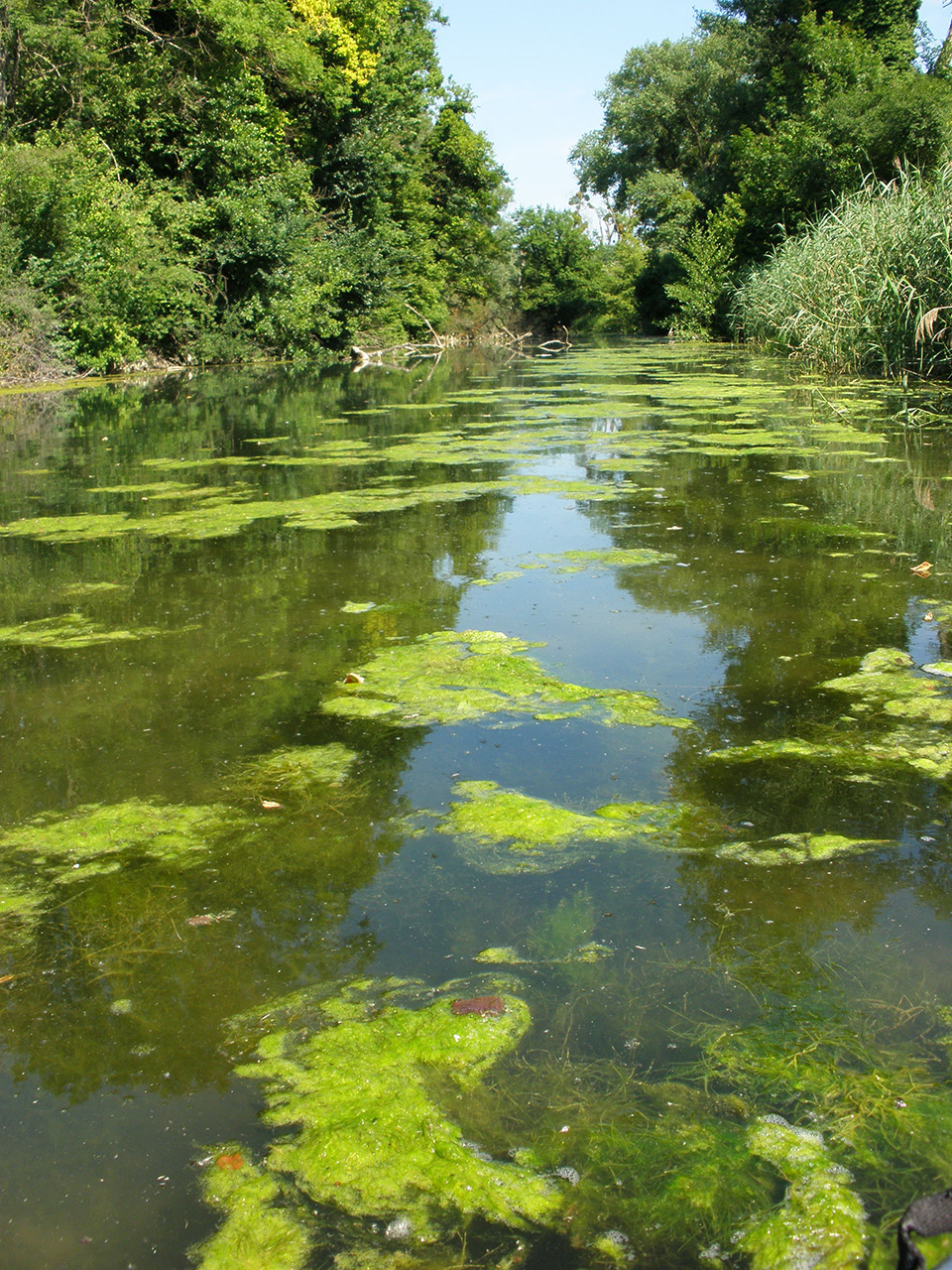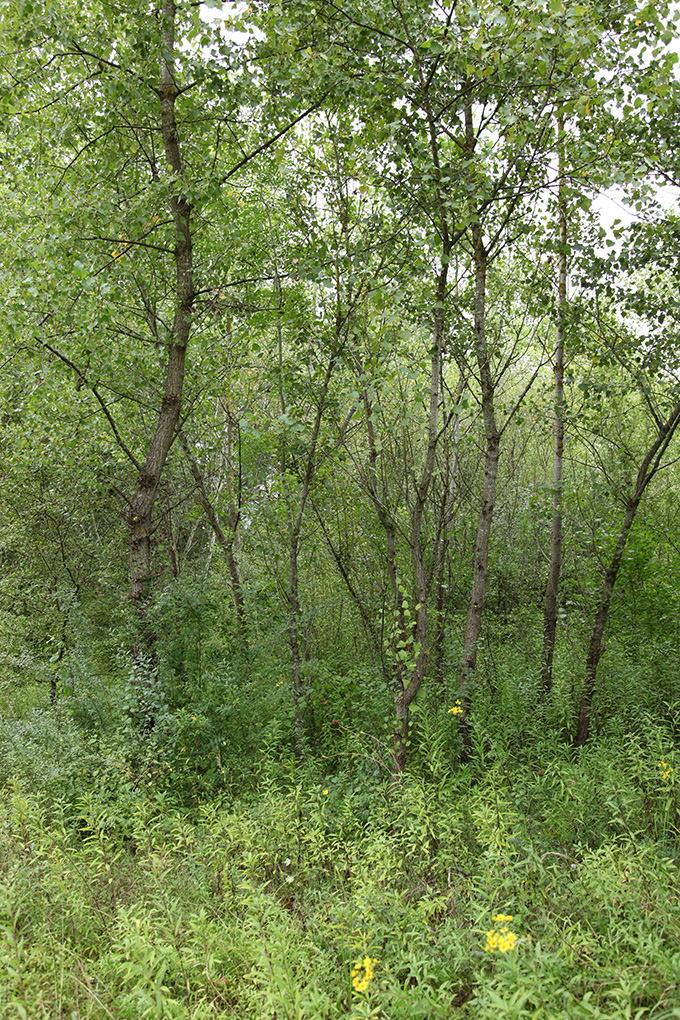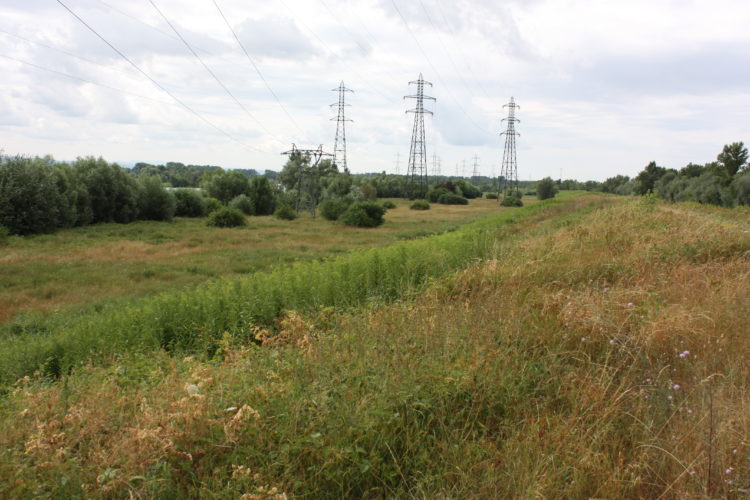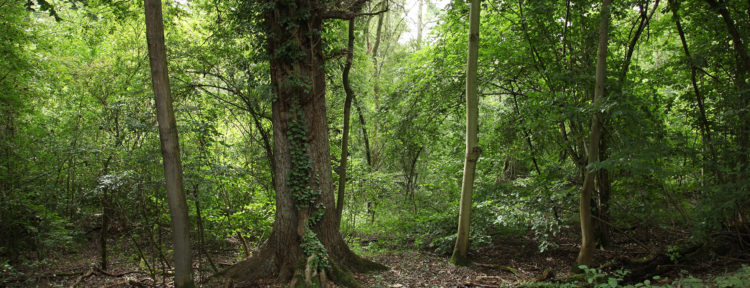
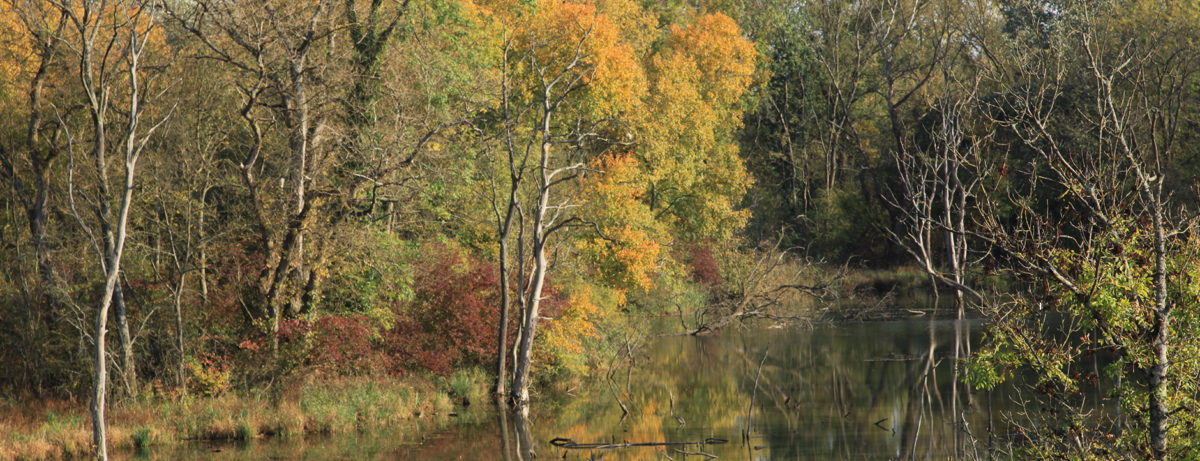
Aquatic Habitats on Rohrschollen Island
The Vieux Rhin, Bauerngrundwasser, ponds and other wet areas
Aquatic habitats are found all over and around the reserve. In fact they make up over one third of the surface area and come in various forms.
The Vieux Rhin river to the east of the site is the largest aquatic habitat at 95 hectares. Regulated upstream and down by two dams, at this point the river looks like a big lake. It is home to a multitude of aquatic birds in winter.
The Bauerngrundwasser is an old tributary of the Rhine that flows through a section of the island north to south. Long disconnected from the river, this tributary had lost its ecological interest. Reconnected to the Rhine in 2014, it has recovered its alluvial dynamic for the benefit of the fish fauna. The non-flowing sections of the Bauerngrundwasser form stagnant and often shallow habitats where rich aquatic vegetation thrives. Dragonflies, fish, and waterfowl find a source of food and a place to breed.
A dozen ponds have also been counted in the reserve. Mostly situated in the forest, they are crucial as breeding grounds for newts and certain species of frog.
The canal excavated to reconnect the Bauerngrundwasser to the Rhine (LIFE+ project) provides a flowing habitat that was previously lacking in the reserve. Injections reaching 60m³/second during flooding have reshaped the bed of this artificial canal and recreated lost alluvial habitats: point bars (sand, gravel and pebbles), eroded banks, flowing water… Certain species that live in fast-flowing water have also reappeared in this new habitat.
Some of these habitats are habitats of European interest which justify the Reserve’s inclusion in the Natura 2000 network.
These habitats are, according to the Natura 2000 nomenclature:
- 3150 Natural eutrophic lakes with Magnopotamion or Hydrocharition – type vegetation;
- 3260 Water courses of plain to montane levels with the Ranunculion fluitantis and Callitricho-Batrachion vegetation.
Two cubic meters of water are injected on average every second into the canal excavated to carry water from the Rhine and revive the Bauerngrundwasser.
Source : EMS
